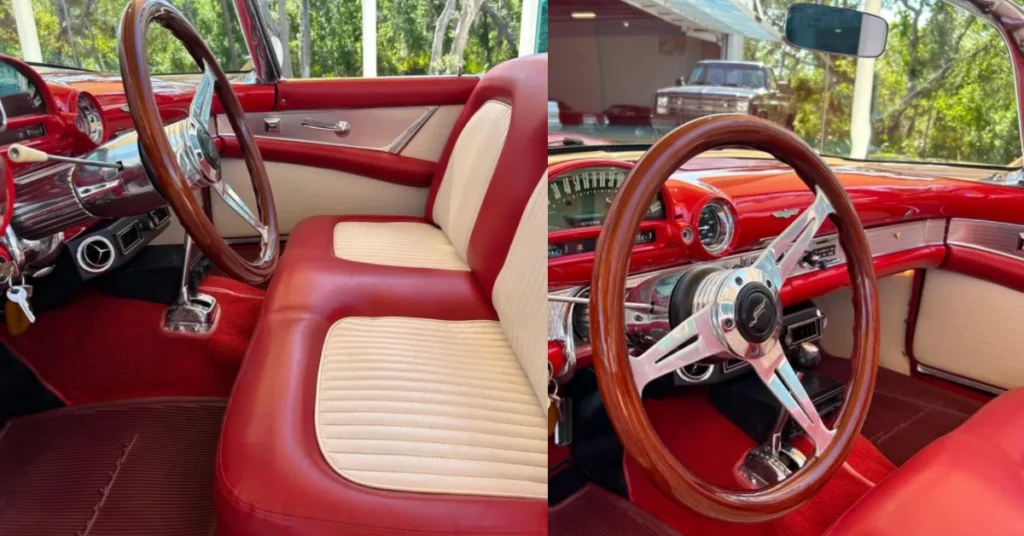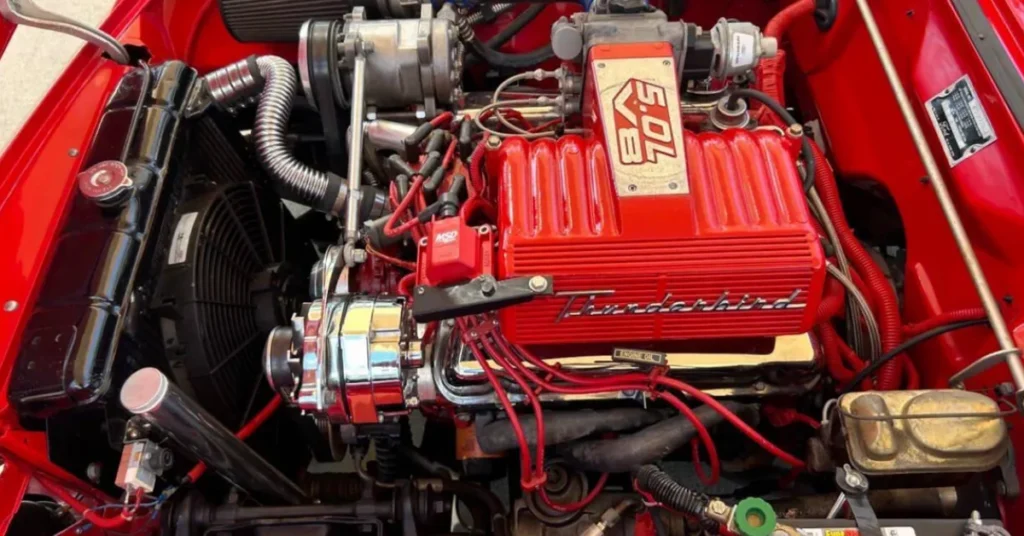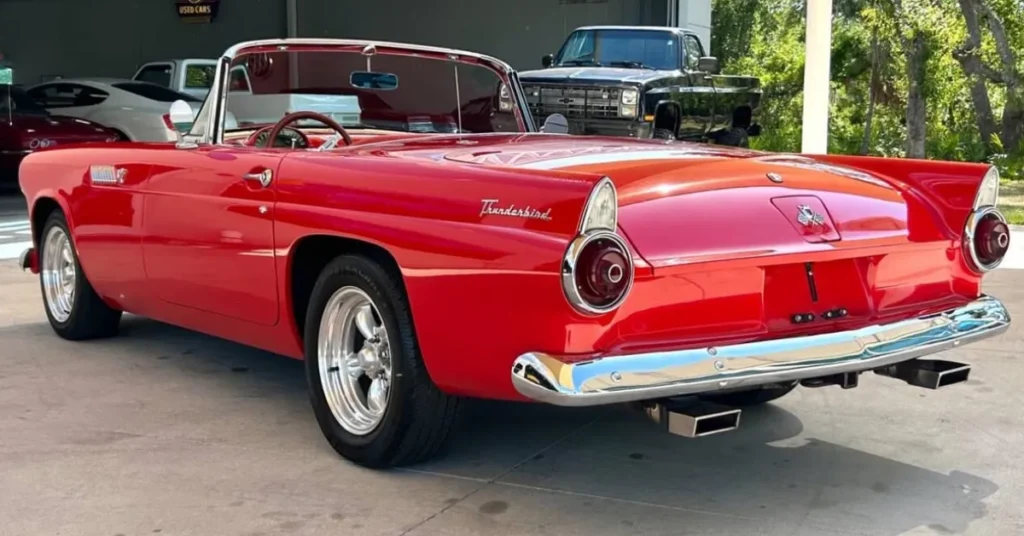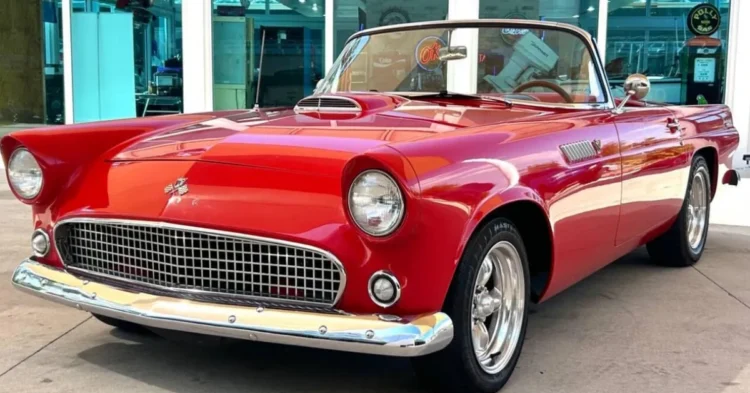The 1955 Ford Thunderbird, affectionately known as the “T-Bird,” emerged as a defining icon of American automotive culture, blending the elegance of a luxury car with the rebellious spirit of a sports car. Introduced as Ford’s response to the Chevrolet Corvette, this two-seater convertible captured the imagination of drivers with its sleek design, powerful performance, and unique charisma. Unlike its European counterparts, the Thunderbird offered a distinctly American take on style and power, making it a favorite among enthusiasts and a symbol of mid-century optimism. This article explores the history, design, performance, cultural impact, and enduring legacy of the 1955 Ford Thunderbird, revealing why it remains a timeless classic.
Table of Contents
The Birth of the 1955 Ford Thunderbird
A Response to the Corvette
In the early 1950s, the American automotive landscape was dominated by large, family-oriented sedans, but the introduction of the Chevrolet Corvette in 1953 sparked a new interest in sports cars. Ford, recognizing the potential of this emerging market, set out to create a vehicle that could rival the Corvette while offering a more refined and luxurious experience. The result was the Ford Thunderbird, unveiled at the Detroit Auto Show on February 20, 1954, and released for the 1955 model year.
Unlike the Corvette, which leaned heavily on European sports car influences, the Thunderbird was designed as a “personal luxury car,” combining sporty performance with comfort and style. Named after a mythical creature revered in Native American culture, the T-Bird aimed to evoke freedom and power, appealing to drivers seeking both sophistication and excitement.
A Market Sensation
The 1955 Thunderbird was an immediate success, outselling the Corvette by a wide margin with 16,155 units produced compared to Chevrolet’s 700. Priced at $2,944 (approximately $34,000 in 2025 dollars), it offered a compelling blend of performance and luxury, positioning it as a premium yet accessible option for American buyers. Its debut marked the beginning of a legendary nameplate that would evolve over decades.
The 1970 Pontiac GTO Judge Ram Air IV: The Rarest and Most Exclusive Muscle Car of the 1970s
The 1969 Pontiac GTO 2 Judge Hardtop: A Bold Muscle Car Legend That Redefined
Jay Leno’s 1966 Dodge Coronet HEMI: The Bulletproof Classic Muscle Car That Fuels His Relaxation
Design and Features of the 1955 Ford Thunderbird
Sleek and Elegant Styling
The 1955 Ford Thunderbird was a design triumph, with a low, sleek profile that exuded sophistication and power. Measuring just over 15 feet in length, its compact dimensions contrasted with the era’s bulky sedans, giving it a sporty, agile appearance. The car’s smooth, rounded lines, chrome-trimmed grille, and circular taillights created a cohesive and elegant look, while the removable hardtop with circular porthole windows became an iconic feature.
Available in vibrant colors like Torch Red, Raven Black, and Thunderbird Blue, the T-Bird was designed to stand out. The convertible soft top, offered in black or white, added versatility, allowing drivers to enjoy open-air motoring. Chrome accents, including hood ornaments and side vents, enhanced its luxurious appeal, making it a favorite for cruising boulevards and car shows.
Refined and Comfortable Interior
The Thunderbird’s interior was a showcase of mid-century luxury, blending style with functionality. The cabin featured padded bucket seats upholstered in vinyl or optional leather, a telescoping steering wheel, and a wraparound dashboard with analog gauges for speed, fuel, and temperature. Standard amenities included a heater, clock, and optional power windows, while the AM radio provided a soundtrack for drives.
Unlike the spartan interiors of European sports cars, the Thunderbird prioritized comfort, with ample legroom and a spacious trunk for weekend getaways. The attention to detail, from chrome trim to color-coordinated upholstery, created an inviting environment that reflected the car’s dual nature as both a performance machine and a luxury cruiser.

Performance and Engineering
Powerful V8 Performance
The 1955 Ford Thunderbird was powered by a 292-cubic-inch Y-block V8 engine, producing 193 horsepower with the standard three-speed manual transmission or 198 horsepower with the optional Ford-O-Matic automatic. This engine, paired with a four-barrel carburetor, delivered smooth and responsive performance, capable of accelerating from 0 to 60 mph in approximately 9 seconds and reaching a top speed of 115 mph.
The T-Bird’s rear-wheel-drive system and lightweight construction—around 3,200 pounds—ensured nimble handling, while its low center of gravity enhanced stability. The engine’s robust torque made it ideal for cruising, whether on city streets or open highways, offering a balance of power and refinement that appealed to American drivers.
Handling and Ride Quality
The Thunderbird’s suspension, featuring coil springs in the front and leaf springs in the rear, provided a comfortable yet controlled ride, prioritizing luxury over razor-sharp handling. Its responsive steering and optional power brakes made it easy to maneuver, though it was less agile than European sports cars like the MG TD. The car’s design favored long-distance cruising over track performance, aligning with its personal luxury car ethos.
For drivers, the Thunderbird offered a thrilling yet relaxed experience, with the V8’s distinctive rumble and the open-top option amplifying the joy of the road. Its versatility made it equally suited for spirited drives and leisurely outings, a quality that resonated with its target audience.

Cultural Impact and Legacy
A Symbol of Mid-Century America
The 1955 Ford Thunderbird arrived during a period of post-war prosperity and optimism, embodying the American dream of freedom and individuality. Its blend of elegance and rebellion appealed to a wide audience, from young professionals to Hollywood stars. The T-Bird’s appearances in films, TV shows, and popular media, such as American Graffiti and Thunderbird by The Beach Boys, cemented its status as a cultural icon, synonymous with the 1950s’ carefree spirit.
The Thunderbird’s success influenced the evolution of the personal luxury car segment, paving the way for later models like the Pontiac Grand Prix and Chrysler 300. Its distinctive styling and performance also inspired modern reinterpretations, such as the 2002-2005 Thunderbird, which paid homage to the original’s design.
Collectibility and Value
The 1955 Ford Thunderbird is a highly sought-after classic, with its rarity and historical significance driving strong demand. Well-preserved examples typically range from $40,000 to $70,000, while concours-quality or low-mileage cars can fetch $80,000 to $100,000 or more at auction. The removable hardtop with porthole windows, original V8, and vibrant color options are particularly prized, with documented or celebrity-owned examples commanding premium prices. The T-Bird’s enduring popularity ensures its value continues to appreciate, especially for unrestored or meticulously restored models.

The Thunderbird’s Enduring Appeal
A Fusion of Elegance and Rebellion
The 1955 Ford Thunderbird remains a timeless classic, blending the sophistication of a luxury car with the rebellious spirit of a sports car. Its sleek design, powerful V8, and cultural significance make it a standout at car shows, cruises, and collections, evoking nostalgia for a bygone era. For enthusiasts, it’s a tangible link to the 1950s’ optimism and automotive innovation, offering a driving experience that modern cars struggle to replicate.
Lessons for Modern Automakers
The Thunderbird’s success highlights the value of creating vehicles that balance style, performance, and emotional appeal. As automakers focus on electric and autonomous technologies, the 1955 T-Bird reminds us of the power of design and driver engagement to create lasting icons, encouraging manufacturers to preserve the joy of motoring in future models.
Conclusion
The 1955 Ford Thunderbird is more than a car—it’s a radiant symbol of American ingenuity, fusing elegance with a rebellious spirit that defined mid-century automotive culture. Its sleek styling, potent V8 performance, and cultural resonance make it a cherished classic, celebrated by enthusiasts and collectors worldwide. Whether cruising under the stars or displayed at a car show, the Thunderbird continues to captivate, proving that some cars are built to soar forever.

